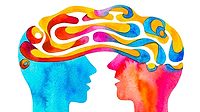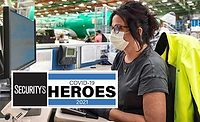Security Talk
The 20-mile trail to zero






William Boelcke spent the years 1998 to 2000 with the U.S. Air Force. He’d spend the next 18-plus years battling mental health issues and substance abuse. Two years ago, in a treatment facility in Rockford, Ill., Boelcke was introduced to BraveHearts and its equine-assisted therapy program. The non-profit organization based in Illinois has been working with veterans, providing free equine-assisted therapy and a place of calm and acceptance, since 2007.
“I found something that helped me in my recovery and I’ve stuck with it,” Boelcke shares. “I started going on a weekly basis while I was in the treatment program and they told me I could continue coming for a year afterward. It has done so much for my recovery, my confidence level and my self-esteem.”
Equine services provide emotional, cognitive, social and physical benefits for veterans. Veterans at BraveHearts have reported increased self-esteem, self-worth, trust for others and community integration, and decreased depression, anxiety, post-traumatic stress disorder attacks and self-inflicting thoughts.
Worldwide, there are now hundreds of equine-assisted therapy programs designed for patients with a broad range of psychological and physical conditions. Equine-assisted therapy is an adjunct intervention that incorporates experiential activities with horses within a traditional therapeutic framework (such as cognitive behavioral therapy or relational Gestalt therapy).
In a 2018 study completed at the Harry S. Truman Memorial Veterans Hospital, Columbia, Mo., looking at the effects of therapeutic horseback riding (THR) on post-traumatic stress disorder in military veterans, results showed that participants had a statistically significant decrease in PTSD scores after three weeks of THR as well as a statistically and clinically significant decrease after six weeks of THR. Logistic regression showed that participants had a 66.7% likelihood of having lower PTSD scores at three weeks and 87.5% likelihood at six weeks.
When BraveHearts began offering equine-assisted therapy programs to veterans in 2007, the veteran suicide death rate was 5,893 that year, according to the U.S. Department of Veterans Affairs’ 2019 National Veteran Suicide Prevention Annual Report Office of Mental Health and Suicide Prevention report. In 2017, the most recent year on the report, the veteran suicide death count was 6,139. The average number of veterans committing suicide each day in the U.S. is just under 20 veterans per day.
Last year, BraveHearts completed 16,000 sessions at no cost to veterans and their family members dealing with PTSD and other issues. BraveHearts now operates nationally and has the largest equine-based program in the nation for military veterans comprised of riding, ground activities and gentling wild mustangs. All services are offered at no cost to the veteran and caregiver or member of his/her family. Services are provided through individual and group lessons. BraveHearts partners with local Veterans Affairs facilities to provide innovative, recreational services using horses.
But there is much more to be done, according to Meggan Hill-McQueeney, president and COO of BraveHearts. In 2016, to raise awareness about the number of veteran suicides, BraveHearts created its “Trail to Zero” rides (which this year are taking place both live and virtually). The 20-mile rides symbolize the near 20 veterans and active service members lost to suicide each day.
“Now, more than ever before, mental health is being recognized as a critical component of our wellbeing,” McQueeney says. “We want the public to know more about horses and how beneficial they can be to individuals who are struggling.”
Boelcke adds that bringing awareness to first responder and veteran suicide rates, PTSD and other mental health issues reduces the stigma that many people around the world feel, keeping them from seeking help. “Anything that raises the awareness reduces that stigma,” he says. “Talking about mental health openly and putting it on the same level as physical disability is important and can be very effective to help people continue their jobs and reduce the stigma.”
Looking for a reprint of this article?
From high-res PDFs to custom plaques, order your copy today!










